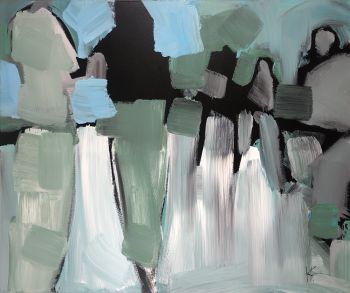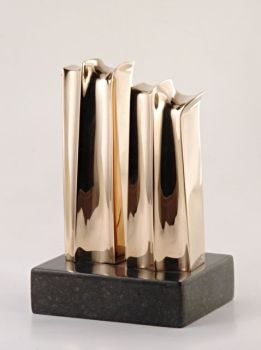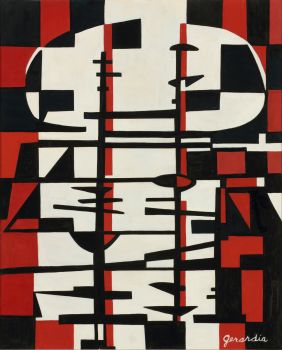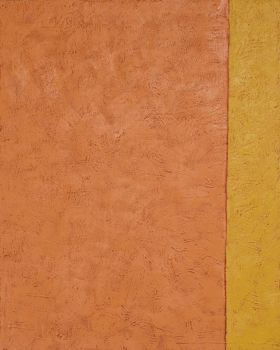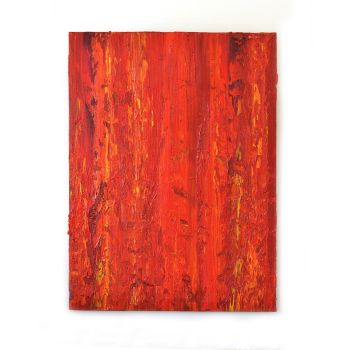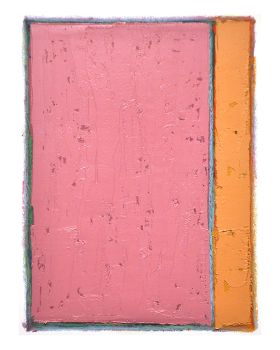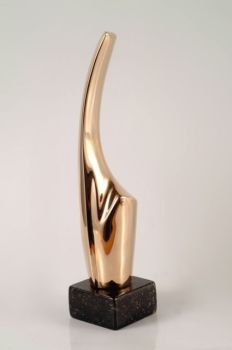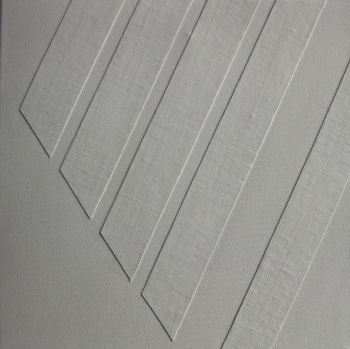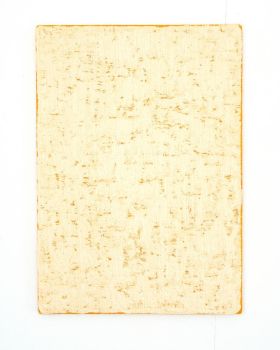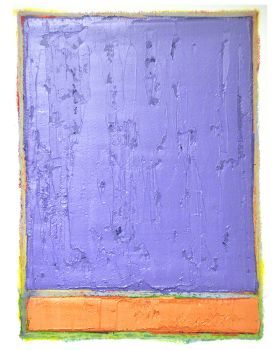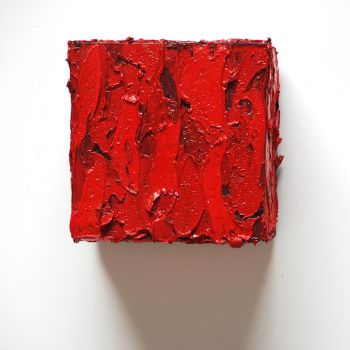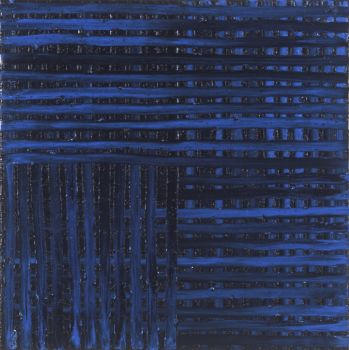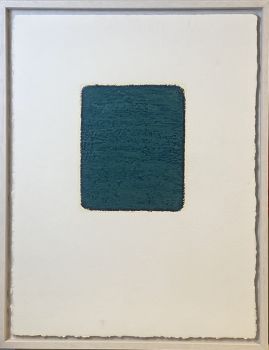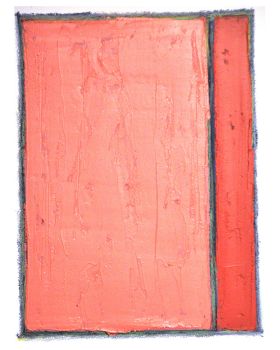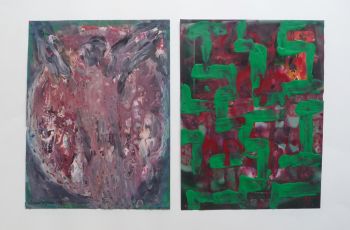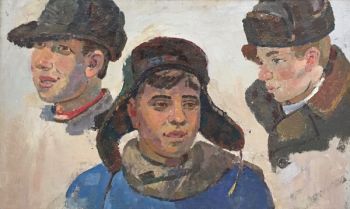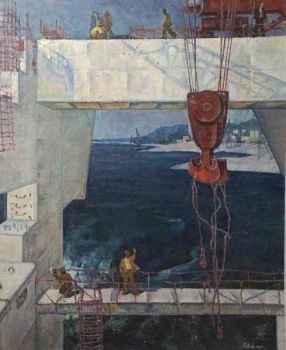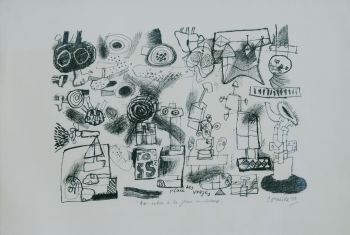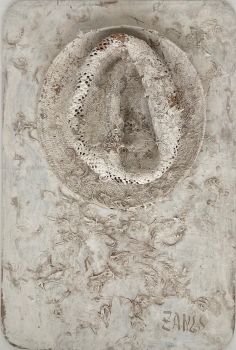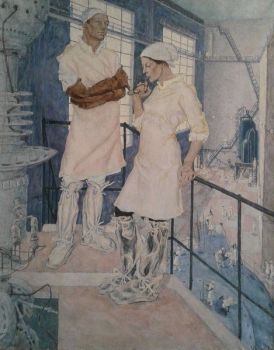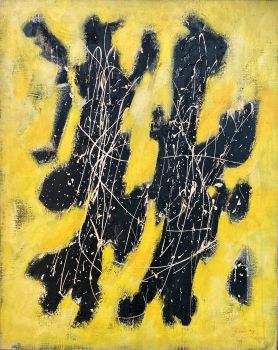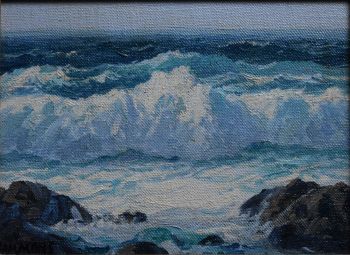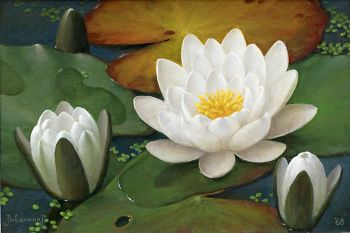Pieter de Haard – “Compositie XIV” (Variation Pentagram) 1978/1988 – oil and yarn on board 1978 - 1988
Pieter de Haard
ToilePeinture à l'huilePeindre
71 ⨯ 70 ⨯ 2 cm
ConditionVery good
Actuellement indisponible via Gallerease
Van Kerkhoff Art
- Sur l'oeuvre d'artA unique oil and yarn painting on board. Painted in 1978 and revised in 1988.
Signature and title on the reverse.
About Pieter de Haard
Pieter de Haard (Rotterdam 1914 – Rotterdam 2000) was a Dutch painter and illustrator, most known for his geometric abstract oeuvre he created from the 1940’s onward.
As a young boy, Pieter grew an interest in art and started visiting exhibitions in the Boijmans van Beuningen Museum in his hometown, Rotterdam. The museum director Dirk Hannema noticed the young visitor and advised the boy to go to the Kunstnijverheids School, the predecessor of the Art Academy.
In 1931/1932 PdH went to Münich where he studied Philosophy and Mathematics. When he returned to Rotterdam, he continued to paint. In the pastels De Haard painted during World War II he continued researching into the representation of spatial dynamics until he finally settled for mathematics, its natural ratios and the Golden Section in particular.
The oeuvre from his mathematical period which started in 1946 when after he returned to Rotterdam constituted the height of his career, was gradually stripped bare of colour and the compositions became ever more straightforward.
From the later ’40s to mid-’50s, Pieter de Haard was (partly) living in Paris, where he created an oeuvre partially based on musical rhythms. While in Paris Pieter de Haard worked for an American impresario of theatre shows for whom he painted decors. That American liked his work and introduced De Haard to gallerists, art dealers and American collectors.
Pieter de Haard returned to Rotterdam in the 1950’s and got married. Times were difficult for him in the next two decades and he got a job as an art-teacher by the Social Department of the city of Rotterdam.
Since the 1970s, interest in Pieter de Haard’s work has been growing, as evidenced by the exhibitions organised of his work since then.
Signed
Verso signed and dated; Pieter de Haard, 1978 / 1988
Condition
Good original condition, original aluminium frame
Provenance
Inheritance family De Haard
Dimensions
Artwork
Height 71 cm
Width 70 cm
Frame
Height 71,5 cm
Width 70,8 cm
Depth 2,5 cm - Sur l'artiste
Durant ses années de lycée, il passait souvent ses heures libres au Musée Boymans. Au cours de sa dernière année scolaire, il a combiné cela avec des cours du soir à l'Académie des Arts Visuels de Rotterdam. Il a reçu sa formation technique en peinture à Munich, après quoi il a gagné sa vie comme restaurateur pendant un certain temps. Au début, il travaillait au sens figuré ; À partir de la fin des années 1930, il commence à expérimenter l’abstraction.
Pendant les années de guerre, il lit Spinoza, Kant et Goethe. Spinoza et Kant ont joué un rôle important dans le développement de ses idées sur l'espace et l'infini, tandis que Goethe l'a particulièrement fasciné par sa théorie de la couleur. De Haard s'est également penché sur les idées et le travail des artistes de De Stijl, où le dynamisme de Van Doesburg l'a particulièrement séduit. Il ressentait une relation forte entre les arts visuels et la musique et voyait cette relation exclusivement en termes de couleurs réelles par rapport aux tonalités et aux timbres. Dans sa peinture, il fait varier la luminosité et la saturation des couleurs.
Déjà pendant la Seconde Guerre mondiale, il créait ses premières œuvres géométriques abstraites : des figures géométriques, basées sur des systèmes de mesure séculaires, avec le nombre d'or comme favori. Une ligne est divisée de telle manière que la partie la plus courte est égale au double de la partie la plus longue. Les relations qui en résultent semblent toujours harmonieuses.
L'œuvre de De Haard a un caractère cosmique et se distingue par ses combinaisons de couleurs passionnantes.
Êtes-vous intéressé par l'achat de cette oeuvre?
Artwork details
Related artworks
Rene Rietmeyer
"Portrait of Little Sara" 20182018
Prezzo su richiestaEuropean Cultural Centre Collection
Rene Rietmeyer
TOKYO - Kudan House - January 2021 #042021
Prezzo su richiestaEuropean Cultural Centre Collection
Rene Rietmeyer
TOKYO - Kudan House - January 2021 #032021
Prezzo su richiestaEuropean Cultural Centre Collection
Rene Rietmeyer
"DUSSELDORF, SEPTEMBER 2005"2005
Prezzo su richiestaEuropean Cultural Centre Collection
Rene Rietmeyer
TOKYO - Kudan House - January 2021 #022021
Prezzo su richiestaEuropean Cultural Centre Collection
1 - 4 / 24- 1 - 4 / 24
Rene Rietmeyer
"Installation big boxes Miami-Beach 2006"2006
Prezzo su richiestaEuropean Cultural Centre Collection
1 - 4 / 24- 1 - 4 / 12







